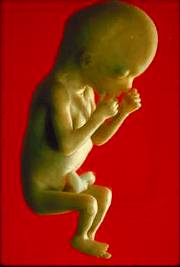Home Page
The latest articles, features and news.


All About...


Sponsored Links


Discussion Forums




Pecker Provisions


Condoms, lubes, pumps, stretchers, exercises, supplements, sports underwear and more.

Firefly Talks Dicks


Words of feminine wisdom about men's problems.

|
| | |
|

24 July 2003
Malformations Of Penis, Testicular Problems Linked To Pesticides, Plasticizers
by George Atkinson  Over the last ten years, US researchers have observed a marked increase in some male reproductive disorders, including undescended testicles, increased instances of testicular cancer, and decreased sperm count. In the last 20 years the rates for testicular cancer have grown almost five-fold in Denmark, yet neighboring Finland has not experienced such a dramatic increase. In an effort to explain this phenomenon, scientists have hypothesized that these human male reproductive deficits may have a common origin: a disturbance in the level of androgen and other critical hormones during fetal development.
Over the last ten years, US researchers have observed a marked increase in some male reproductive disorders, including undescended testicles, increased instances of testicular cancer, and decreased sperm count. In the last 20 years the rates for testicular cancer have grown almost five-fold in Denmark, yet neighboring Finland has not experienced such a dramatic increase. In an effort to explain this phenomenon, scientists have hypothesized that these human male reproductive deficits may have a common origin: a disturbance in the level of androgen and other critical hormones during fetal development. Paul M.D. Foster, of the National Institutes of Environmental Sciences and his colleagues have recently co-authored a series of journal articles examining how fetal exposure to two common environmental agents affects the reproductive capabilities of some laboratory animals. Dr. Foster presented his research at the 55th Annual Meeting of the American Association for Clinical Chemistry (AACC). Foster and his colleagues have recently published the results of animal studies conducted to explore how two environmental agents, di-n-butyl phthalate (DBP) and linuron (L), can produce a range of reproductive effects in rats, similar to the effects found in humans. Both agents have been related to the incidence of male birth defects at birth and adverse development of male reproduction later in life in rats. DBP is a chemical used as a placticizer and solvent that is found in nearly every environmental medium, including air, water, and food. Because it is ubiquitous, some concerns have been raised about its potential health consequences, since one effect of exposure to DBP is that it inhibits the production of androgen, a human male sex hormone. Other effects include malformations of the epididymus, failure of normal testicular descent and malformation of the penis, termed a hypospadias (a condition whereby the urinary tract opening is not located properly at the tip of the penis), a birth defect occurring in every one of 200 male births. Linuron is used in herbicides and pesticides on soybeans and corn. Because it is sprayed onto crops, a small amount of the chemical is able to incorporate itself into the crop. Unlike DBP, linuron does not decrease the production of androgen, but binds to the androgen receptor to prevent the action of normal androgens. When administered in utero, linuron disturbs the timing of the sequences that take place during fetal development. Linuron interrupts the signals at key times, leading to the development of a variety of birth defects that only affect the male, since it is only the male that requires androgen for their normal reproductive development. In the studies undertaken by Foster and his colleagues they discovered major malformations, predominantly of the epididymis (an elongated mass of convoluted efferent tubes at the back of the testes), following the administration of the chemicals during critical windows of in utero development. The epididymal malformations were only seen in males after birth. The series of experiments also found the following: - The antiandrogens cause a shortage in testosterone, leading to the various deformities in the fetal male reproductive organs.
- A leading deformity is malformation of the epididymis, a consequence of the anti-androgens causing direct interference with the fetal reproductiv. The epididymis transports, stores, and matures spermatozoa between the testis and ductus deferens. Blockage of the epididymal structures occurs and leads to infertility and later possible atrophy of the testes.
- DBP and linuron operate via different mechanisms that affect fetal androgen signaling. The former can lead to failure of the normal development of the reproductive system with malformations in many reproductive organs including hypospadias (hypospadias has shown a significant increase in incidence in the last 20 years).
- The altered adult phenotype following in utero exposure to linuron is very similar to that produced by the anti-androgen DBP, with the exception of testicular lesions and alterations in fetal testosterone levels.
Studies of anti-androgen and the male reproductive system are confined to experimental animals, since human studies exposing pregnant women to large quantities of these chemical agents would be inappropriate. Additionally, common human birth defects are difficult to track and definitively establish cause and effect. Foster does not believe that the findings of these animal studies should be cause for alarm. While researchers do not know at what dose level exposure to these chemicals might produce effects in humans, they know that in animals, the dose levels that produce the adverse changes are significantly higher than the levels that have been measured in ongoing human studies.
|
|